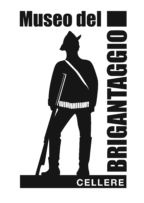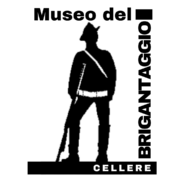Narrator: Marco D’Aureli – museum’s director
The museum offers an overview of brigantry in the maremma region through the lens of anthropology, an imaginary journey between historical sources and contemporary testimonies that revolve around Domenico Tiburzi.
Cellere’s Museo del brigantaggio is a museum that focuses on storytelling and whose installments all revolve around the figure of Domenico Tiburzi. Known as the King of Lamone, Tiburzi, who was born in Pianiano in 1836 and died at the Forane di Capalbio in 1896, was the epitome of the Maremma brigand. The museum is organized in two main sections. The ground floor offers a series of documents of various natures, dating from 1893, year of the Processo di Viterbo, to 1896, through the use of ethnographic installations. Tying these documents together are extracts from Aldo Rossi’s news reports Nel Regno di Tiburzi. These tools show how the people back then saw and depicted the brigand in the years he was active. The upper floor gives visitors insight into contemporary stories and memories that, well over 100 years after his death, revolve around the figure of the so-called “giustiziere di Cellere” (Cellere’s avenger). The itinerary ends with an area that celebrates the commercial and promotional success of the “brigand brand” on the territory.
The Museo del brigantaggio aims to be a place to discuss and analyze the illegality that affected the Maremma in the second half of the XIX century and the related topics. The museum’s itinerary gives visitors key interpretations for an in depth analysis of the territory where these events took place.






